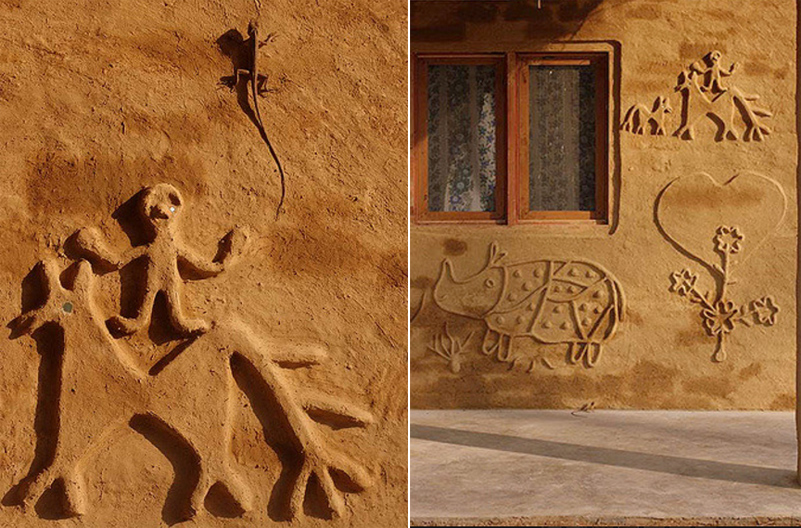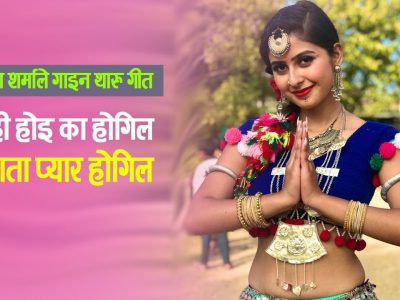The real story of the Tharus

Sanjib Chaudhary vis Voice of Tharu
Late Ramanand Prasad Singh, Ex-Attorney General of Nepal, speaks about the Tharu roots at a press conference in Patna, India on 17 May 1988
The purpose of this press conference is to expose some of the false senses that have been created round the Tharus community and to bring to light facts in history that tell us the real story about the origin and development of that community.
The fanciful, unfounded, maligned and false story about the Tharu community has done much damage to the community’s growth and progress which both the Government of India and Nepal have in view. Tenuous and recurrent are the themes about the origin of the name ‘Tharu’ from the ‘Tharu desert’. Many writers, without any substantial evidence, have put forward their proposition that the Tharus migrated from the Thar Desert in the 13th to 15th century and, therefore, they began to call themselves, or others call them the Tharus. To this story they attempted to lend credence by mentioning the immigration of Rajput women from Chitor Garha in Rajasthan during the Muslim and Mogal periods. They did flee Rajasthan during the sack of Chitour by Alloudin Khilji and Emperor Akbar. One story says that Jaimal and Fahta, decidedly great names in the annals of Rajasthan, were killed by Akbar’s forces and the men of their race fled to the jungles of Nepal, and the sons and daughters produced by their marriage with their carriers and servants are the ‘Tharus’. Some ignorant and crafty Tharus have indeed tried to cash in on this theory by saying that they came from Rajasthan due to Muslim atrocities over them and began their life afresh in the new land bereft of their sacred thread, because they adopted agriculture as their main profession and not war fare as true Rajput did in those days. Some so-called writers who came forward as Socio-Anthropologists have lent support to this theory thus: that the Tharus came from Rajasthan and their thesis is that they are the sons and daughters of the fleeing Rajput women who married their servants who came with them. Another theory, similar in nature, is that the Tharus are the descendents of the Bhills of Rajasthan who accompanied their Rajput Mistresses and came to Nepal Tarai during the middle ages. In support of their thesis they say that the Bhills colour and customs resemble Tharus complexion and some of their customs.
Now, I categorically reject these theories about the Tharu origin. What I have found in history is altogether different. I do not say on mere conjecture but on the basis of solid facts of ancient Indian History.
What I discovered about the Tharus is that it is a pre-Aryan race of Mongoloid origin. The socialists of India like D.N. Majumdar and others agree to this view that theories of their being Astroloids is nothing else but fiction and have not an iota of truth in it.
The true facts about the origin of the Tharus lie elsewhere. They originated in Nepal and are the remnants of the Sakya’s and Kolya’s, the two branches of the descendants of Okaka and Okamukha, the kings of Banaras. During the time of sage Kapil who had his ashram in the area which later became known as Kapilvastu, King Okaka had married a second wife in his old age and he was forced by the younger queen to promise to make her son the next king. The king Okamukha was very pious minded and, therefore, informed his three sons from his elder wife of his predicament and advised them not to revolt in his life time but to recapture their kingdom after his death from their step brother.
The four sons left the kingdom instead of thinking that there were no dearth of land and they could find a new kingdom. The five sisters, the eldest name was Priya, also joined their brother and left the country of Kosala and came to Kapil’s Ashram and sought his permission to settle in the region by clearing the jungle and cultivating the forest land. Kapil readily agreed but requested them to name their state as Kapilvastu after his name. So the new country came to be known as Kapilvastu.
Now gentlemen, what I said is no figment of imagination. These facts are writ-large in the Buddhist literature-‘Lalit Bistar’ and ‘Jatak’ tales; the birth stories as narrated by Buddha, support it.
The world knows that the Buddha created a revolution in the then deteriorating Hindu society by denying and denouncing Varna Vyabastha and the caste system. His proposition that all men are born equal and are the architect of their own life was very painful to the Brahmins and the people supporting Brahminism. They saw their power structure shaking and near destruction. The doctrine of equality of freedom shook the very foundation of the Hindu Society based on the caste-system and fatalism, on the inexorable law of past Karm.
Manu, observing the social and religious conduct of the tribal to which Buddha belonged called them ‘Bratya Kshtriyas, that is, those noble men of power who believed in ‘Brata’ and ‘Upabas, and who, though they had their own territory and country, were farmers by occupation. Buddha’s father Suddhodhana was a big owner of the land and used to go round his farms with stick in hand. The Tharus have been farmer by occupation down the ages. They never did the works which is regarded by the caste Hindu as menial. If you will minutely observe their religious rites, they consist mainly of Brata’ and Upabas, just as obtained at the time of the Buddha. Buddha, as a matter of fact, being dissatisfied with the ascetic methods of the Hindu sages and seers, reverted back to his family tradition of ‘Brata’ and ‘Upabas, taking vow of achieving his goal determinedly and with resolution. The ‘Bhumi Sparsa’ or the earth touching posture of the Buddha bears witness to this fact. One can still find parallels in Buddha’s tradition and the Tharus tradition of ‘Brata,.
The facial features of the ‘THARUS’ too resemble the earliest stone images of the Buddha. ‘Dharm Chakra Paribartana’ Mudra of the Buddha is immortalized in the Sarnath Statue of the Buddha. The statue bears no sacred thread as do the images of Hindu gods. There is no mention of Yagyopabit (sacred thread ceremony) and chudamani karma in the biography of the Buddha as revealed in the Tripitaka religious literature. Vicent Smith, Oldenberg, Basham all renowned historians, have vouched that the Buddha was not of the Aryan stock, that he belonged to a tribe of mongoloid extraction. The Tharus bear that feature. The physiognomy of the Tharu tribe immediately comes before our minds here. The Tharus have the same facial features. They lived and still live in the same terrain. The place of their origin, Kapilvastu has always had Tharus as the main element of its population.
There is yet another proof I would like to offer in support of my proposition that the Buddha belonged to the same clan from which comes the Tharus community. Its scientific importance cannot be disregarded. Mr. Brayan Hodgson writes in his book, “ Bodo; Dhimal and Kooche tribes” that these tribes almost immune from malaria. To get that immunity, he says, that they must have lived in the present habitat for at least three thousand years. Now, gentle men, we celebrated in Nepal the 2532 birth, enlightenment and death anniversary of the Lord Buddha in the last Baisakha purnima. Does not it take the Tharus community’s origin back to the times of the Buddha or earlier? Recent books too suggest similar conclusions. The book the ‘Historical tradition of India’ written by learned Pargitar has suggested that if there be any remnants of the Buddha’s tribe, it is the Tharus. Tissa Kashyapa, who is a present day professor of Buddhism religion at Nalanda Pali Institute in his article “the history of Buddhism” contained in an anthology edited by Kenneth Morgan, mentions the Tharus rituals as reminiscent of their Buddhist origin. Prof. Rhys Davids is positive that Buddha belonged to a Mongoloid tribe, Vicent Smith is is of the same the view. And finally, I came to what history records. Those who have written about the Tharus, or referred to them in olden times, personalities, the veracity of whose statements are beyond doubt. Sylvan Levy, the great French Historian, whose ‘Le Nepal’ is a common source for all Historians who have written or who still write about Nepal and its people, cannot do without consulting ‘Le Nepal’. Now Levy refers to the great Buddhist historian and polymath, Taranath (Born 1575) as to Champaran as the land of the Tharus from which tribe issued Ashoka. I see no reason to doubt him. Ashoka is the grand son of Chandragupt Maurya, who was born in Champaran at a place which abounded in Peacocks. The place of his birth, Piplikanan’ points out to the Tharu habitat. As a matter of fact, the meal of Ashoka contained as one major item, the peacock dish.
Bear with me gentlemen of the press. I have yet one more proof to offer which tells you of the Tharus’ ancient origin and ancestry. The name of Padma Sambhawa, the ‘Lotus Born’ is known all over the world, as the founder of Tibetan Buddhism or Lamaism. It was he to whom credit goes as the great founder of Vajrayan Cult of Mahayan Buddhism in Tibet and Nepal. He is respected in Tibet as great Guru or Guru Rinpoche. His biography tells us that he visited Kamru, Tharu, Tirhut and many other important places in India. He was a renowned professor of yoga in the famous Buddhist University at Nalanda in the eight century. He is worshiped in Mahayana Countries as a Bodhistawa that is a future Buddha.
The father of Buddha, Suddhodhana was not a Chakrabarti king but only a large Bhumipati and was the elected leader of his people who lived in the land cleared of mighty Sakhuwa trees. Sakhuwa was their national tree and from that name Sakya (mighty, able) derives. Buddha’s father’s name Sudhodhana literally means pure rice. The Tharus still use the world ‘Odana’ when they inquire of their guests as to whether they had had their meals by asking then whether they had had their ‘Odana’.
Again, it is well known to the Buddhist historians that the Buddha’s ancestors, when they came to resettle in the woods of Kapilvastu, the brothers married their own sisters while the eldest sister Priya ran the household by remaining unmarried. Now if the Buddha’s ancestors had been the Kshatriyas of Hindu concept, they could not have married their own sisters. It would have been sacrilegious, abhorring to the caste Hindu. Siddhartha married his own maternal sister Yashodhara of the clan of Koliya, begotten of Priya by king of Banaras who lived in a near by jungle suffering from leprosy and who was cured by eating leaves of the Koilar (Koliya) tree. Priya, who had to leave her brother due also to leprosy, was helped by Ram to get ride of leprosy and who ultimately married her and begot many sons and daughters. It was the Sakya and the Koliyan people who became initiated later on in Buddhism, after the Buddha having gained enlightenment and having many disciples came to Kapilvastu to meet his family. The people of those two clans who conducted themselves according to Buddha’s original doctrines as reported by their elders came to be known as Therabadins. These followers of Theravada Buddhism came to be called ‘Sthavir’. It is from this word that the name Tharu derives. From Sthavir to Thavir and from Thavir to Tharu is an easy and logical verbal transition. This interpretation of the word ‘Tharu’ is logical and in keeping with their traditional values and behavior.
The Tharus live a simple life and are renowned for their honesty. Sociologists and anthropologists all bear out this truth about the Tharus. The Tharus believe in ‘Brata and Upabas’ and know not the Hindu rites of Yoga or Homa. They do not wear sacred thread as do the Brahmins and Rajput communities. As a matter of fact and honesty, they were converted into Hinduism by the Hindu priests and Shankracharya both by
Now when you hear from him that in the eighth century he visited Tharu or the land of Tharus, where does the fictitious theory of the’Tharu origin’ from Thar Desert, or branding them as the sons and daughters of the Rajput women and their servant, stand?
The Tharus are of Nepalese origin. They originated in Nepal and around Kapilvastu and are to-day to be found all over Nepal Tarai and many border lying districts of India ranging from the border of Uttar Pradesh to the border of Bengal. Hope, these expositions of the origin and development of the community called the Tharus will help eradicate some of the mischievous and twisted, much maligned stories about the Tharus and scholars, historians, sociologists and others would review the stand of the past writers on the subject.
Thank you all.
photo credit: Yodod via photopin cc




















Facebook Comment